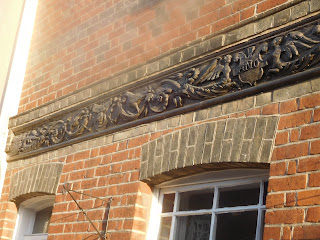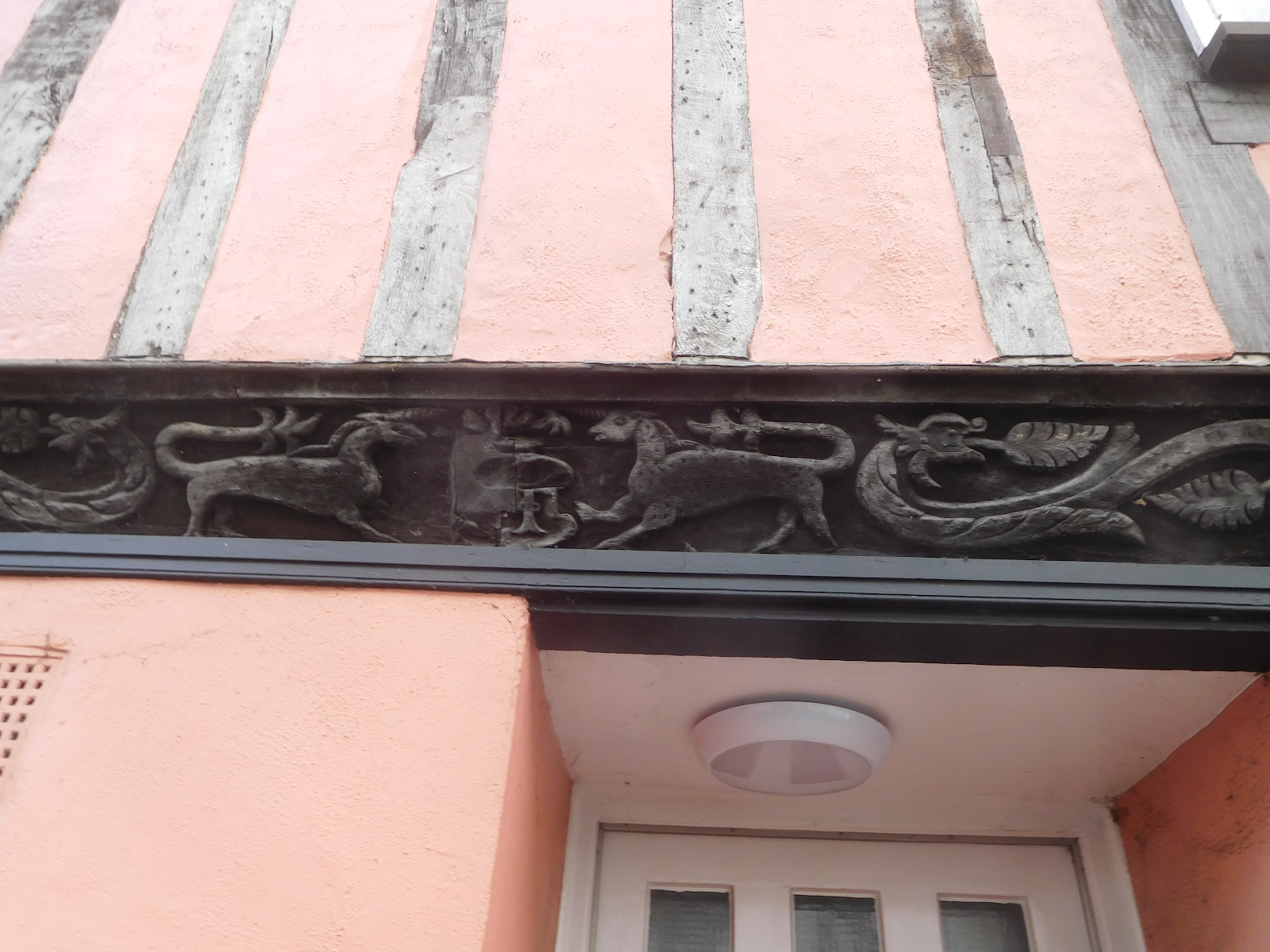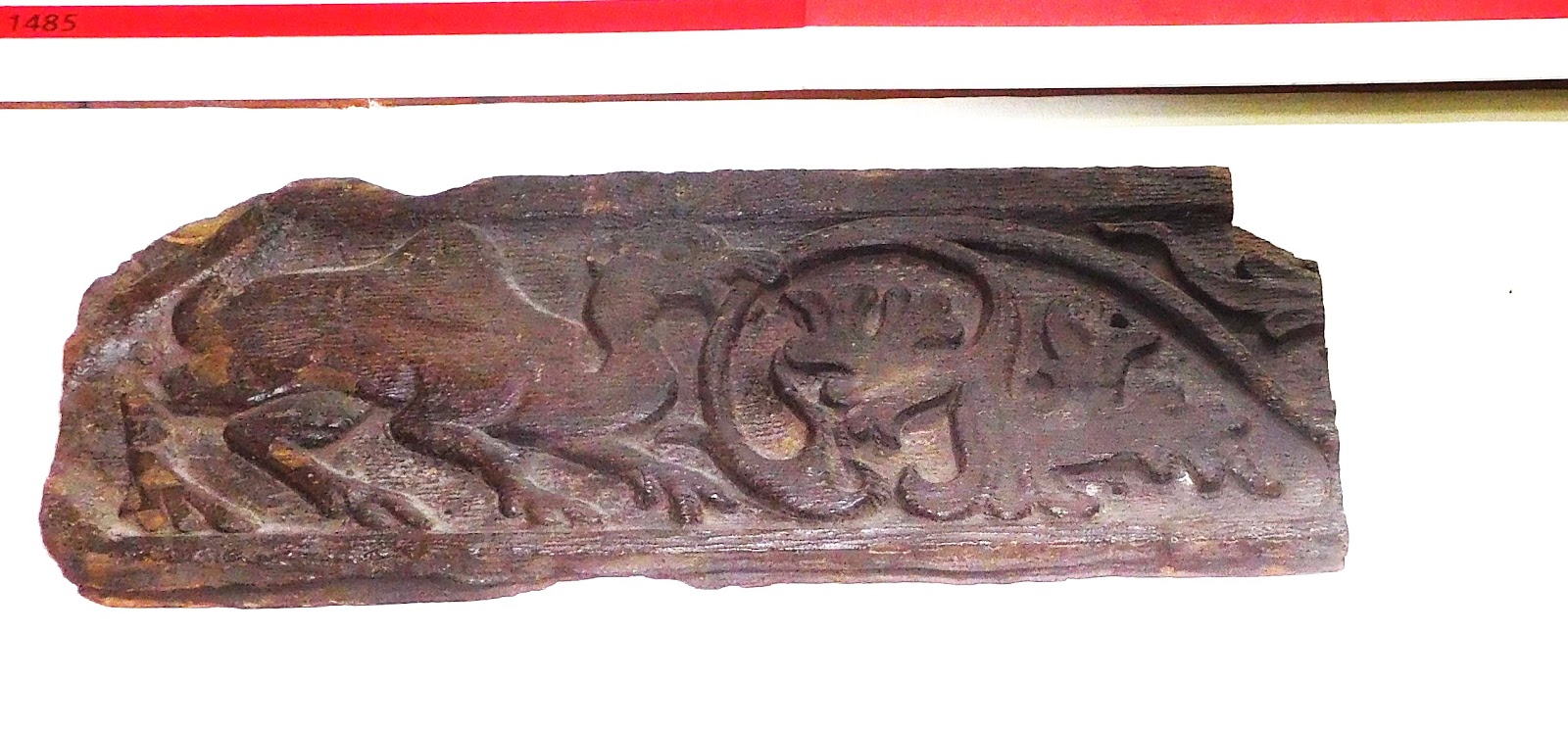Of dragons and unicorns
The casual visitor to Coggeshall might not notice the age of some of the houses - so many appear to be Georgian, Victorian or Edwardian. There are very few half-timbered properties, for example. The house I live in myself has window frames at the front dating to the 1830s, but the roof timbers are from 1636, and the end wall of the dining room is from the fifteenth century. Fashions change and so do facades. Take a look at the roof-line, however, and the true age of the houses is revealed.
A notable feature of some of Coggehall's houses is a carved timber frieze running just under the jetty for the first floor. This is sometimes called a bressumer, which implies a load-bearing horizontal timber. Examples of this feature can be seen on houses in East and West Streets and also in Church Street.
Remember: just click on any picture to see more details.
Here we have a stylised border of dragons, but - in the middle, facing off - are what look like a pair of unicorns. Odd, because they are usually shown as solitary creatures
Of course, the most spectacular example of a frieze is found at Paycocke's House, once the home of Thomas Paycocke, a wool merchant who built it in 1509, now in the care of the National Trust. Unlike the other friezes in Coggeshall this does not show repeated motifs and images but instead unifies the whole thing with a sinuous vine running the full length of the building. Out of this vine emerge buds and leaves, human heads and faces along with grotesque animal heads. It is singularly inventive and full of meanings now lost to us.
Reading from left to right, the Paycocke's frieze begins with a wyvern or dragon upside down. John S. Lee in his book "The Mediaeval Clothier" suggests that this wyvern is a rebus for the Worshipful Company of Weavers, appropriate because Paycocke traded in woollen cloth. Others have suggested that it is on its back because the mummer playing St George on the right-hand gate-post has just dispatched it.
In 1509, when this part of the house was built, Henry V111 came to the throne, marrying his first wife, Catherine of Aragon, the widow of his brother, Arthur, who had died young. Could this next image be a representation of Henry and Catherine? The figures are wearing crowns and holding hands, which symbolises matrimony.
Right over the front door of this house built on profits from the wool trade: this little sheep. It is sitting up on its rump in exactly the position sheep have been held to immobilise them for shearing over the centuries. Women were paid one penny per score for shearing sheep - that's twenty sheep to shear before that penny is earned. Of course, sheep were smaller then. And there were four farthings to the penny, so bread could be bought with that pittance.
Just to the right of the sheep, a long-necked beast emerges from a bud, and then we see a flower apparently swallowing a child. Only the trunk and kicking legs are visible. Perhaps the child is diving into the flower, but it does not look that way.
At the far right, this curious image. Believe it or not, this is the "swan with two necks", the symbol of the Worshipful Company of Vintners who had a monopoly on the supply of wine in the City of London. They also had the right to own swans on the River Thames, marking their cygnets with two nicks on the beak - they use a different method now. There are pubs and restaurants with this name even today.
At the far end, a man wearing a pointed hat. Archive photographs from the 1930s show boatmen on the Thames during Swan Upping wearing similar pointed hats, so perhaps this is part of a traditional costume.
So, was it usual to have images relating to Worshipful Companies displayed on buildings in this way? Well, here is an image of a camel, probably from a similar frieze. It is in the Museum in Hereford and shows the symbol of the Grocers' Company. This is the only one I have seen but there must be others. When most people were not literate visual images like this would have been important.
Many of the details on the Coggeshall friezes only become apparent when someone points them out for you. I hope that you can take a closer look yourself.




.JPG)
.JPG)

.JPG)


.JPG)
.JPG)
.JPG)

This is fabulous. Are these friezes found all over the country or a feature of East Anglia? Jan
ReplyDeleteTo be honest, I don't really know. I have seen carved bargeboards elsewhere - that's the bit just under the eaves. The camel fragment was in Hereford so perhaps they were widespread, although where the half-timbering studwork is black and white it seems unlikely. The one at Paycocke's is unique, even in Coggeshall.
ReplyDelete